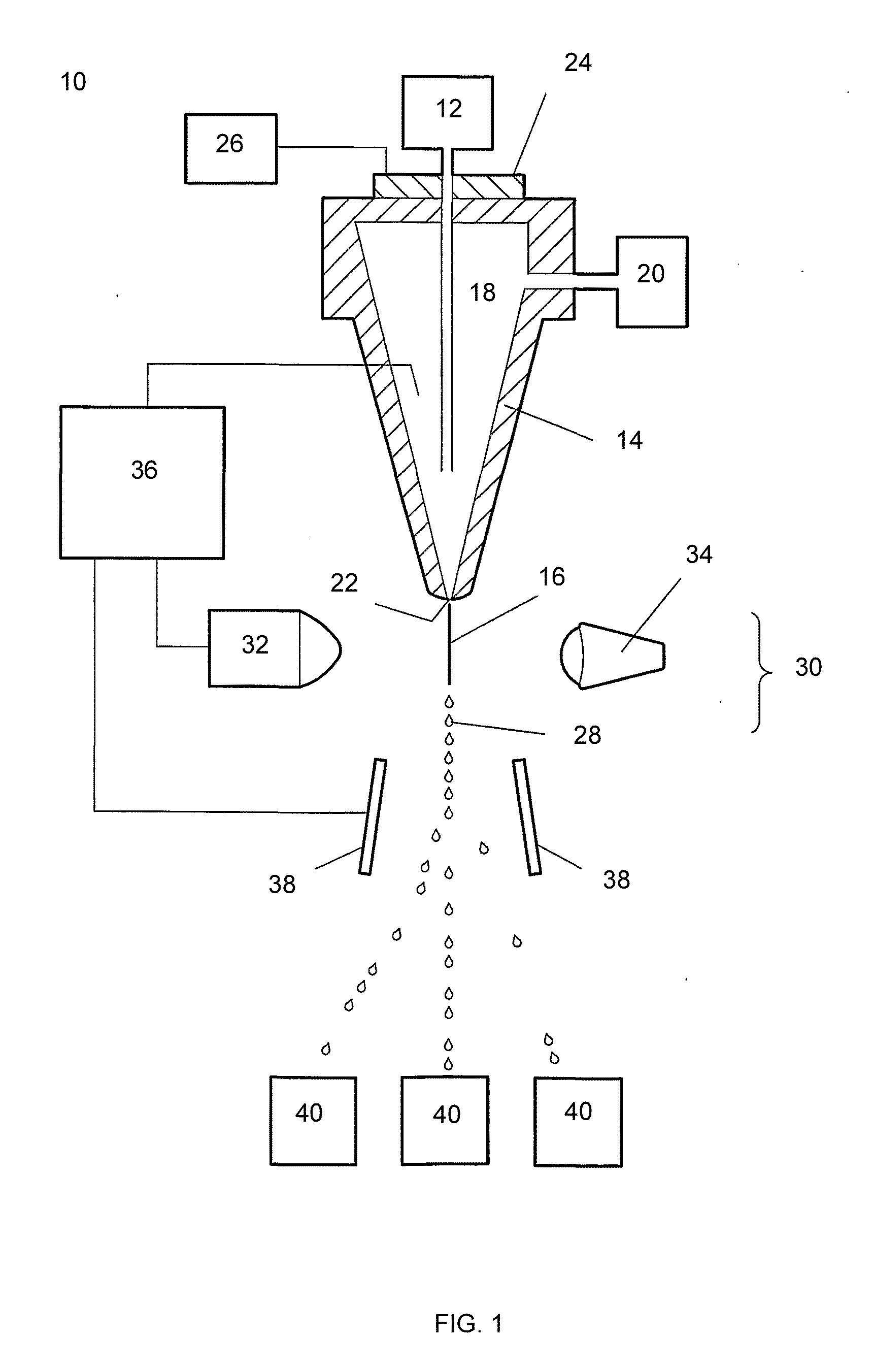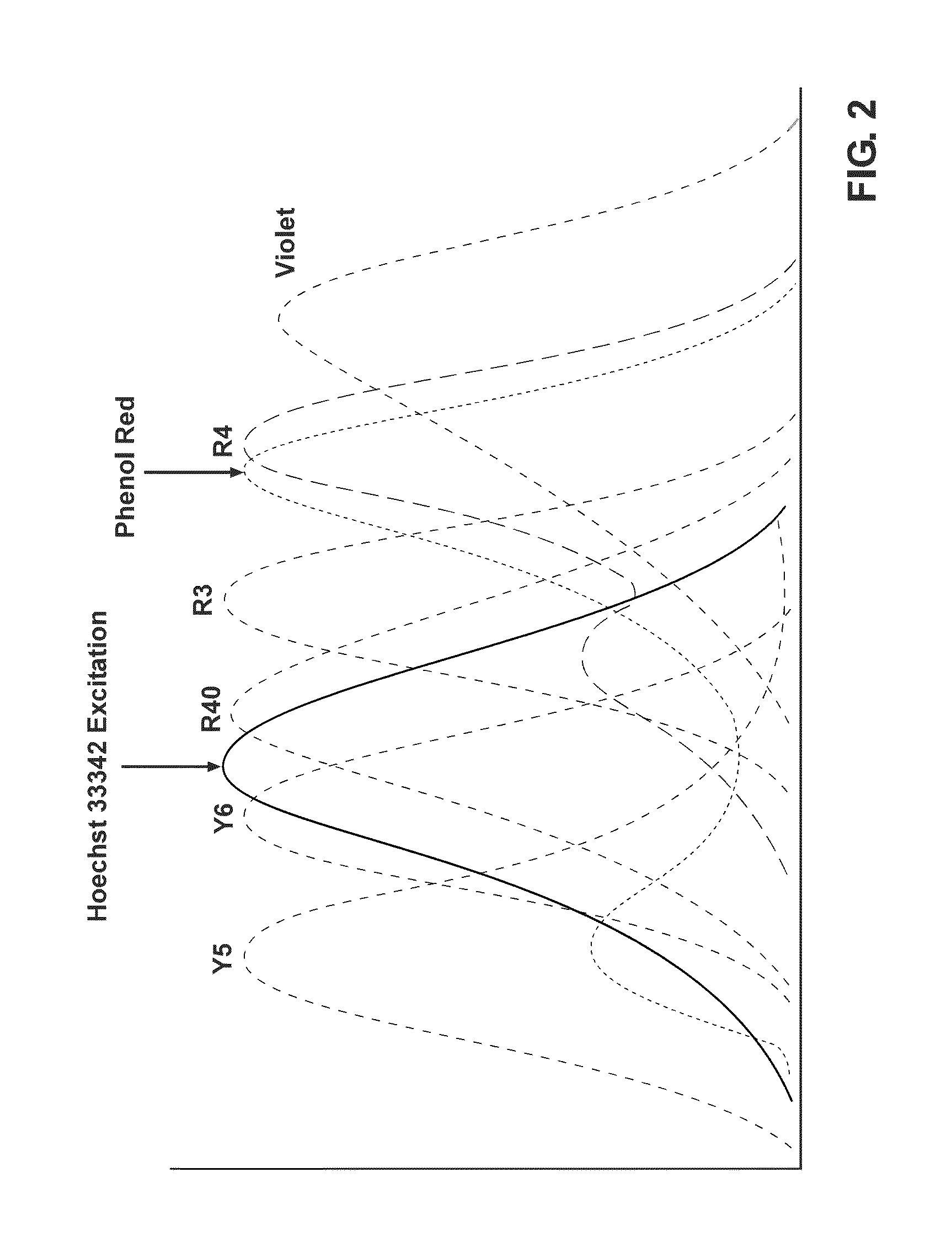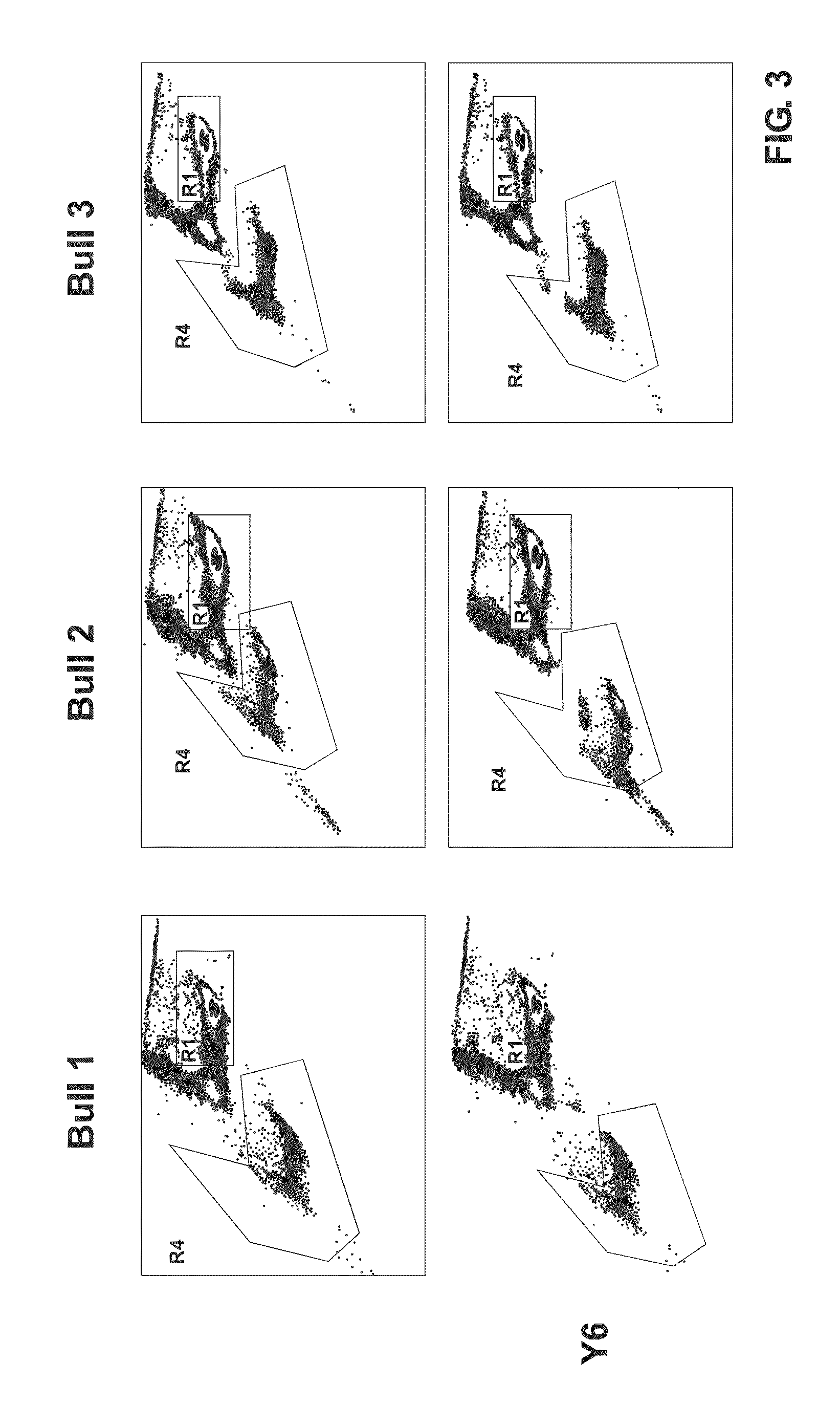Sperm staining and sorting methods
- Summary
- Abstract
- Description
- Claims
- Application Information
AI Technical Summary
Benefits of technology
Problems solved by technology
Method used
Image
Examples
example 1
Comparison of Dead Quenching Dyes for Post Thaw Motility Sperm Motility in Bovine
[0054]Collection
[0055]Sperm was collected from 10 different bulls on a routine collection schedule using an artificial vagina over the course of 4 days. The 10 bulls included both Jersey bulls and Holstein bulls. All ejaculates contained greater than 60% progressive motility and greater than 70% morphological normal sperm. Antibiotics were added within 15 minutes of collection.
[0056]Staining
[0057]Red food dye treatment 40% —A reduced volume of red food dye No. 40 control was established. Sperm was diluted to 160×106 sperm per ml in a modified TALP buffer, as described in Table 1, at a pH of 7.4. Samples collected from Jersey bulls were incubated with 16 μl of Hoechst 33342 per 2 ml of sample for between 45 and 60 minutes at 34° C., while samples collected from Holstein bulls were incubated 17 μl of Hoechst 33342 per 2 ml of sample for between 45 and 60 minutes at 34° C. After incubation an equal volume ...
example 2
Comparison for Dead Quenching Dyes for Sorting Parameters in Bovine
[0066]Collection
[0067]8 Sperm collections were taken from 7 different bulls on a routine collection schedule using an artificial vagina. The 7 bulls included both Jersey bulls and Holstein bulls. All ejaculates contained greater than 60% progressive motility and greater than 70% morphological normal sperm. Antibiotics were added within 15 minutes of collection. Portions of each collected sample received three different dead quenching dye treatments.
[0068]Staining
[0069]Red food dye No. 40 treatment 100% (control)—A control was established with a conventional volume of red food dye No. 40. Sperm was diluted to 160×106 sperm per ml in a modified TALP buffer, as described in Table 1, at a pH of 7.4. Samples collected from Jersey bulls were incubated with 16 μl of Hoechst 33342 per 2 ml of sample for 60 minutes at 34° C., while sample collected from Holstein bulls were incubated 17 μl of Hoechst 33342 per 2 ml of sample f...
example 3
Comparison of Dead Quenching Dyes for Sperm Motility in Deer and Elk
[0079]Collection
[0080]Each of deer and elk were collected in the Tris-egg yolk catch fluid described as a catch media in Example 1, and shipped for sorting.
[0081]Staining
[0082]A portion of each of the deer and the elk were stained by the red food dye No. 40 treatment 40% with 16 μL Hoechst 33342 and the yellow food dye No. 6 treatment with 14 μL Hoechst 33342 as described in Example 1.
[0083]Sorting and Freezing
[0084]Samples were each bulk sorted with the same machine and parameters described in Example 1. Both sorted X and sorted Y sperm were collected into a single catch. The sorted samples were then frozen like those described in Example 1.
[0085]Results
[0086]Frozen thawed samples were then tested for post thaw motilities and post thaw DNA fragmentation. Post thaw motilities were slightly higher in Elk sorted with a yellow quencher, while a more significant difference existed in progressive motility. In Table 10, p...
PUM
| Property | Measurement | Unit |
|---|---|---|
| Length | aaaaa | aaaaa |
| Length | aaaaa | aaaaa |
| Length | aaaaa | aaaaa |
Abstract
Description
Claims
Application Information
 Login to View More
Login to View More - R&D
- Intellectual Property
- Life Sciences
- Materials
- Tech Scout
- Unparalleled Data Quality
- Higher Quality Content
- 60% Fewer Hallucinations
Browse by: Latest US Patents, China's latest patents, Technical Efficacy Thesaurus, Application Domain, Technology Topic, Popular Technical Reports.
© 2025 PatSnap. All rights reserved.Legal|Privacy policy|Modern Slavery Act Transparency Statement|Sitemap|About US| Contact US: help@patsnap.com



